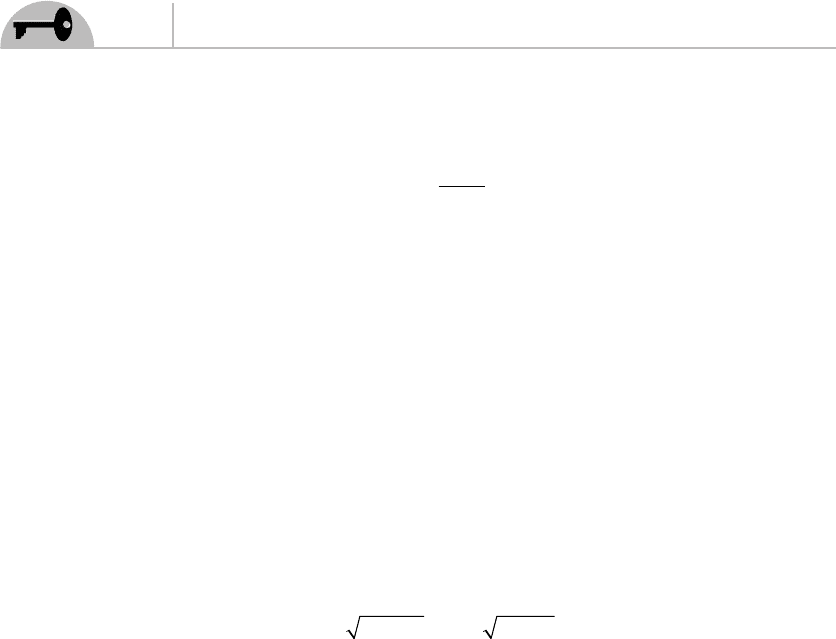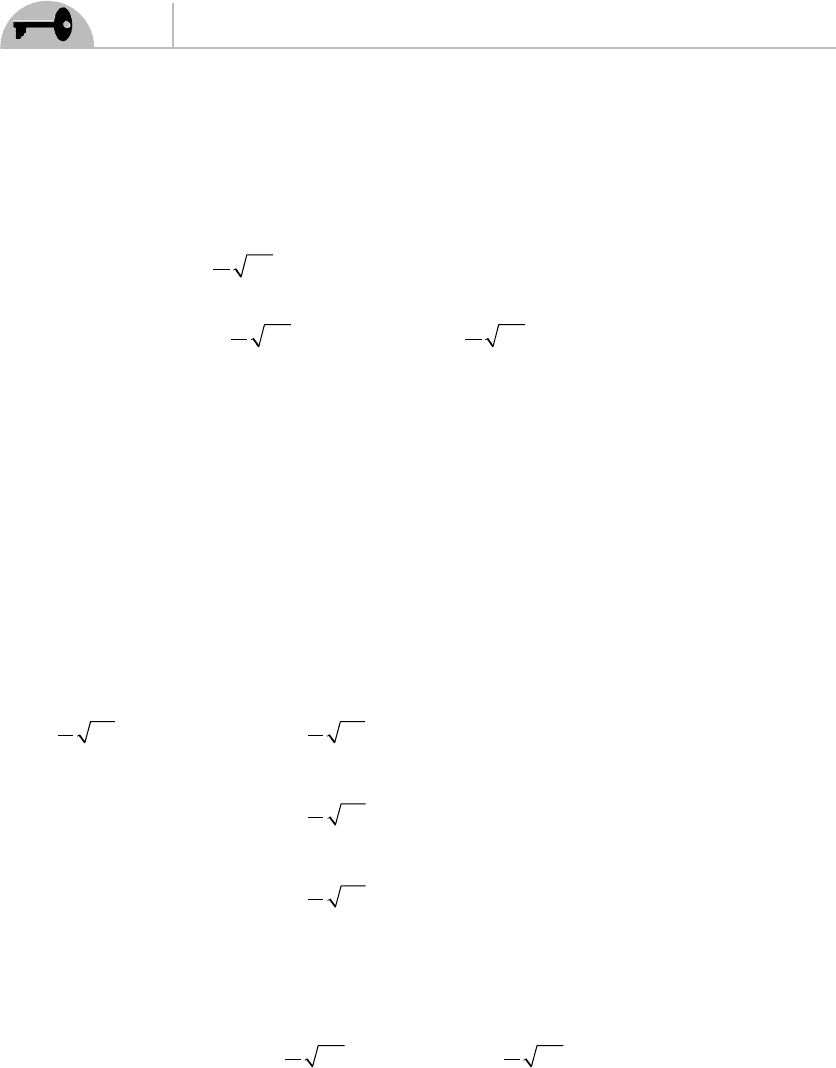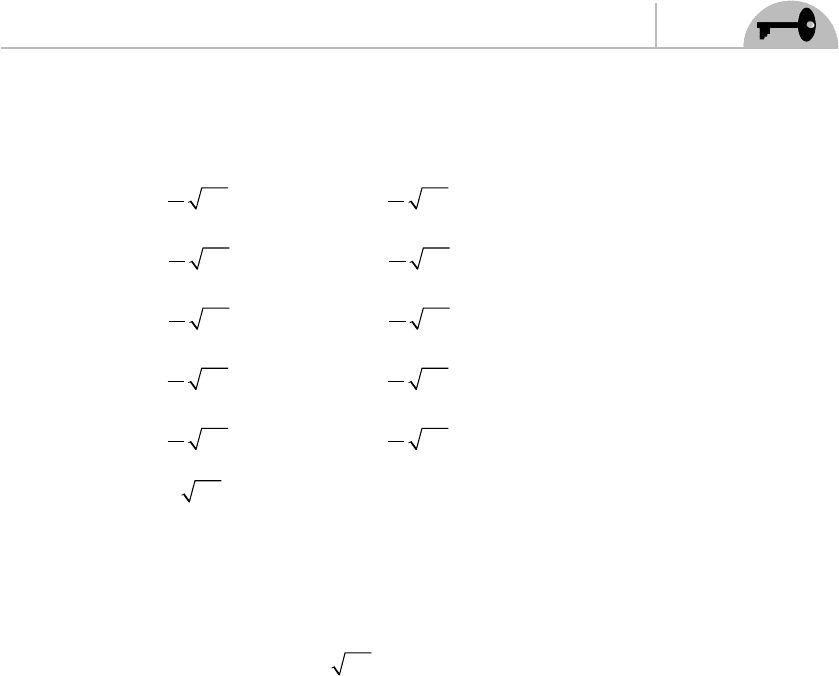McMahon D. String Theory Demystified
Подождите немного. Документ загружается.


56
String Theory Demystifi ed
This is very easy to prove in our one-dimensional example. The calculation is
dQ
dt
d
dt
p
dq
ds
dp
dt
dq
ds
p
d
dt
dq
ds
dp
d
=
⎛
⎝
⎜
⎞
⎠
⎟
=+
=
tt
dq
ds
p
d
ds
dq
dt
+ (commutativity of partial de
rrivatives)
(notati=
∂
∂
+
∂
∂
d
dt
L
q
dq
ds
L
q
dq
ds
oon, let )p
L
q
dq
dt
q
d
dt
L
dq
dt
dq
→
∂
∂
→
=
∂
∂
⎛
⎝
⎞
⎠
,
dds
L
q
dq
ds
L
q
dq
ds
L
q
dq
ds
dL
ds
+
∂
∂
=
∂
∂
+
∂
∂
==
0(ssymmetry of the lagrangian)
For a fi eld
ϕ
µ
we defi ne a Noether current which is a conserved quantity as
j
L
µ
α
α
µ
ϕ
=
∂
∂∂
(
)
(3.6)
We are done with our quick and dirty review of symmetries and conserved quantities.
Now let’s see what symmetries and conserved quantities we can describe for
bosonic string theory in D fl at space-time dimensions.
POINCARÉ TRANSFORMATIONS
The Poincaré group consists of the following transformations:
• Translations in space-time
• Lorentz transformations
In fl at D-dimensional space-time, the Polyakov action is invariant under Poincaré
transformations. A space-time translation is a transformation of the form
XXb
µµµ
→+
(3.7)

CHAPTER 3 Symmetries and Worldsheet Currents
57
where
δ
µ
µ
Xb=
. An infi nitesimal Lorentz transformation is one of the form
XX X
µµµ
ν
ν
ω
→+
(3.8)
In this case
δ
ω
µµ
ν
ν
XX=
. We can combine translations and infi nitesimal Lorentz
transformations as
δω
µµ
ν
νµ
XXb=+
(3.9)
Under a Poincaré transformation the worldsheet metric transforms as
δ
αβ
h = 0
(3.10)
The Polyakov action of Eq. (3.2) is invariant under the transformations given in
Eqs. (3.9) and (3.10). Invariance under Eq. (3.7) leads to conservation of energy and
momentum (energy from time translational invariance and momentum from spatial
translation invariance). Invariance of the Polyakov action under Eq. (3.8) leads to
conservation of angular momentum.
Recall the defi nition of a global symmetry and notice that while the transformations
in Eqs. (3.7) and (3.8) depend on the coordinates of the embedding space-time (the
fi elds
X
µ
), they do not depend on the worldsheet coordinates
(, )
στ
. This means
that on the worldsheet, these symmetries are global. Since the symmetry is global
on the worldsheet and not over all of space-time, we say that this is a global internal
symmetry. Put another way, in string theory a global internal symmetry is one that
acts on the fi elds
X
µ
but not on the two-dimensional space-time of the worldsheet,
that is, the parameters of a global internal symmetry group are independent of the
worldsheet coordinates
(,
)
στ
.
REPARAMETERIZATIONS
Consider a coordinate transformation that takes
(, ) ( , )
στ σ τ
→
′′
, which is a
reparameterization of the worldsheet (also called a diffeomorphism). The metric
h
αβ
transforms as
hh
αβ
µ
α
ν
β
µν
σ
σ
σ
σ
στ
=
∂
′
∂
∂
′
∂
′′′
(, )
(3.11)
(note that in this context we are using primes not to denote differentiation, but
rather to indicate quantities like the metric in the new coordinate system). Since
∂∂
′
=∂ ∂
′
∂∂/(/)(/)
σσσ σ
αρα ρ
and
XX
µµ
στ σ τ
(, ) ( ,
)
→
′′′
it follows that
h
X
X
h
X
αβ
µ
α
µ
β
ρλ
µ
ρ
στ
σσ
στ
σ
(, ) ( , )
∂
∂
∂
∂
=
′′′
∂
′
∂
′
∂
′′
∂
′
X
µ
λ
σ

58
String Theory Demystifi ed
The jacobian for a change in coordinates
σ
σ
→
′
is defi ned by
J =
∂
′
∂
⎛
⎝
⎜
⎞
⎠
⎟
det
σ
σ
α
µ
The jacobian shows up in two places that turn out to cancel themselves to leave the
form of the Polyakov action invariant. It shows up when calculating the determinant
of the metric as
det( ) det( )
′
=hJh
αβ αβ
2
You may recall from calculus that it also shows up in the integration measure:
dJd
22
′
=
σσ
These cancel out in the terms that appear in the Polyakov action [Eq. (3.2)]. That is,
dhdh
22
′
−
′
=−
σσ
det det
Putting all of these results together, we see that a change of worldsheet coordinates
(a reparameterization) leaves the Polyakov action invariant. Therefore a repara-
meterization is a symmetry of the action. Since a reparameterization depends on the
worldsheet coordinates
(, )
στ
, these are local symmetries.
WEYL TRANSFORMATIONS
A Weyl transformation or Weyl rescaling is a conformal transformation of the
worldsheet metric (see Chap. 5) of the form:
heh
µν
φσ τ
µν
→
(, )
(3.12)
Since
hh
αβ
βγ γ
α
δ
=
it follows from Eq. (3.12) that
heh
µν φ σ τ µν
→
− (, )
. Now we recall
two facts about determinants, where we let A, B be
nn
×
matrices:
det( ) det detAB A B=
det( ) det( ) det
ααα
AIA A
n
n
==

CHAPTER 3 Symmetries and Worldsheet Currents
59
In our case, we are working in two dimensions and so:
det( ) deteh e h
φφ
=
2
This means that we have
−→− =−
−
det det dethh e he h hh
µν φ φ µν µν
2
Therefore the Polyakov action is invariant under a Weyl transformation. Since
Eq. (3.12) is dependent on the space-time coordinates
(, )
στ
of the worldsheet, it is
a local symmetry.
Gauge freedom can be used to simplify the worldsheet metric. What this means is
that we can use the symmetries of the action (i.e., utilize the transformations that
leave the action and hence the physics unchanged) to write the worldsheet metric in
a more convenient form, that is sometimes called the fi ducial metric
ˆ
(
)
h
αβ
σ
. Here
we consider a worldsheet with a vanishing Euler characteristic (a cylinder is relevant
to our interest).
The worldsheet has only two coordinates
(,
)
στ
, and this means that
h
αβ
is a
2
2
×
matrix:
h
hh
hh
αβ
=
⎛
⎝
⎜
⎞
⎠
⎟
00 01
10 11
(3.13)
This is going to make things particularly easy for us. We immediately fi nd that there
are only three independent components of the worldsheet metric. This is because,
in general, the metric tensor
g
αβ
is symmetric, so that
gg
αβ βα
=
The fact that the metric is just
22×
means that the symmetry requirement fi xes the
off-diagonal components:
hh
01 10
=
Transforming to a Flat Worldsheet Metric

60
String Theory Demystifi ed
So, this means that we only have to specify three components of
h
αβ
. The choice
can be simplifi ed by using two of the local symmetries of the Polyakov action.
From the previous section we recall that these are
• Reparameterization invariance
• Weyl transformations
The fi rst case, reparameterization invariance, that is, a coordinate transformation,
can be used to take the metric into a form that is proportional to the two-dimensional
fl at Minkowski metric
η
αβ
as follows:
he e
αβ
φσ τ
αβ
φσ τ
η
→=
−
⎛
⎝
⎜
⎞
⎠
⎟
(, ) (, )
10
01
(3.14)
This form happens to be particularly useful, because now we can apply a Weyl
transformation to get rid of the exponential factor. The end result is that it is possible
to use the local symmetries of the Polyakov action to take the worldsheet metric
into the fl at Minkowski metric:
h
αβ αβ
η
→=
−
⎛
⎝
⎜
⎞
⎠
⎟
10
01
(3.15)
This is going to really simplify the situation at hand. First let’s write down the
Polyakov action [Eq. (2.27)] once again:
S
T
dhhXX
P
=− − ∂ ∂
∫
2
2
ση
αβ
α
µ
β
ν
µν
The fi rst thing to notice about Eq. (3.15) is that the determinant is just
hh==
−
=−det det
αβ
10
01
1
and so
−=+h 1
Now since
h
αβ
=
−
⎛
⎝
⎜
⎞
⎠
⎟
10
01

CHAPTER 3 Symmetries and Worldsheet Currents
61
we have
hXX hXX hXX
αβ
α
µ
β
ν
µν
ττ
τ
µ
τ
ν
µν
σσ
σ
µ
σ
ν
µ
ηη η
∂∂ =∂∂ +∂∂
νν
τ
µ
τ
ν
µν σ
µ
σ
ν
µν
τ
µ
τµ σ
ηη
=−∂ ∂ +∂ ∂
=−∂ ∂ +∂
XX XX
XX X
µµ
σµ
∂ X
Do you remember your quantum fi eld theory? This equation should look familiar—
you might recognize the lagrangian (density) for a set of free massless scalar fi elds.
Putting this into the Polyakov action, we see that using its local symmetries has
taken it into the very simple form
S
T
dhhXX
T
dXX
P
=− − ∂ ∂
→∂∂−
∫
∫
2
2
2
2
ση
σ
αβ
α
µ
β
ν
µν
τ
µ
τµ
∂∂∂
(
)
σ
µ
σµ
XX
(3.16)
In the following we use abbreviated notation:
∂
∂
=
∂
∂
=
′
X
X
X
X
µ
µ
µ
µ
τσ
In fl at space (
h
αβ αβ
η
=
) the energy-momentum tensor can be written as
TXX XX
αβ α
µ
βµ αβ
λρ
λ
µ
ρµ
ηη
=∂ ∂ − ∂ ∂
()
1
2
Let’s work out each component. We have
TXX XX XX
ττ τ
µ
τµ ττ
ττ
τ
µ
τµ
σσ
σ
µ
σµ
ηη η
=∂ ∂ − ∂ ∂ + ∂ ∂
()
1
2
=∂∂+−∂∂+∂∂
()
=∂ ∂
τ
µ
τµ τ
µ
τµ σ
µ
σµ
τ
µ
XX XX XX
X
1
2
1
2
ττµ σ
µ
σµ
µ
µ
µ
µ
XXX XXXX+∂ ∂
()
=+
′′
()
1
2

62
String Theory Demystifi ed
Next we have
TXX XX XX
σσ σ
µ
σµ σσ
ττ
τ
µ
τµ
σσ
σ
µ
σµ
ηη η
=∂ ∂ − ∂ ∂ + ∂ ∂
()
1
2
=∂ ∂ − −∂ ∂ +∂ ∂
()
=∂ ∂
τ
µ
τµ τ
µ
τµ σ
µ
σµ
τ
µ
XX XX XX
X
1
2
1
2
ττµ σ
µ
σµ
µ
µ
µ
µ
XXX XXXX+∂ ∂
()
=+
′′
()
1
2
The off-diagonal terms are
TXX XX XX
τσ τ
µ
σµ τσ
ττ
τ
µ
τµ
σσ
σ
µ
σµ
ηη η
=∂ ∂ − ∂ ∂ + ∂ ∂
()
1
2
==∂ ∂ =
′
=∂ ∂ − ∂ ∂
τ
µ
σµ
µ
µ
στ σ
µ
τµ στ
ττ
τ
µ
ηη
XXXX
TXX X
1
2
ττµ
σσ
σ
µ
σµ σ
µ
τµ
µ
µ
η
XXXXXXX+∂∂
()
=∂ ∂ =
′
So we can write the energy-momentum tensor as the matrix
T
XX X X XX
XX XX
αβ
µ
µ
µ
µ
µ
µ
µ
µ
µ
µ
=
+
′′
()
′
′
+
′
1
2
1
2
XXX
µ
µ
′
()
⎛
⎝
⎜
⎜
⎜
⎞
⎠
⎟
⎟
⎟
(3.17)
As specifi ed in Eq. (3.5), this energy-momentum tensor has zero trace. This is
because
Tr T T T T T
TT
()
αβ
α
α
αβ
αβ
ττ
ττ
σσ
σσ
ττ σσ
ηηη
== = +
=− + =
−−+
′′
()
++
′′
()
=
1
2
1
2
0
XX X X XX X X
µ
µ
µ
µ
µ
µ
µ
µ
Now recall from Chap. 2, Prob. 4, that the energy-momentum tensor is defi ned
using the equation of motion for
h
αβ
. This tells us that the energy-momentum tensor
for the string worldsheet is 0, that is,
T
Th
S
h
P
αβ
αβ
δ
δ
=−
−
=
21
0

CHAPTER 3 Symmetries and Worldsheet Currents
63
This means that the equations of motion attained from the Polyakov action [Eq. (3.16)]
are supplemented by the constraint
T
αβ
= 0
Moreover, in fl at space the energy-momentum tensor of the worldsheet is conserved,
that is,
∂=
α
αβ
T 0
We can fi nd conserved charges associated with Poincaré invariance which involves
charges associated with the global symmetries (translation invariance and Lorentz
invariance). The conserved currents (the Noether currents) can be found in the
following way. Using a variation of the lagrangian where
δε
µ
µ
X =
, the current
J
µ
α
is found from
εε
µ
µ
α
α
µ
µ
J
L
X
=
∂
∂∂
()
(3.18)
We will do this in a kind of ad hoc way, using the lagrangian density from the
Polyakov action:
L
T
hh X X
P
=− − ∂ ∂
2
αβ
α
µ
β
ν
µν
η
(3.19)
Now consider a translation
XXb
µµµ
→+
where
b
µ
is our small parameter. Then
L
T
hh X b X b
T
hh
P
→− − ∂ +
()
∂+
()
=− − ∂
2
2
αβ
α
µµ
β
νν
µν
αβ
η
αα
µ
α
µ
β
ν
β
ν
µν
αβ
α
µ
β
ν
η
XbXb
T
hh X X
+∂
()
∂+∂
()
=− − ∂ ∂
2
++∂ ∂ +∂ ∂ +∂ ∂
()
=− −
α
µ
β
ν
α
µ
β
ν
α
µ
β
ν
µν
αβ
η
Xb bX bb
T
hh
2
∂∂∂ +∂∂+∂∂
()
α
µ
β
ν
α
µ
β
ν
α
µ
β
ν
µν
η
XX Xb bX
Conserved Currents from Poincaré Invariance

64
String Theory Demystifi ed
Moving to the last line, we dropped the term
∂∂
α
µ
β
ν
bb
. This is because we are
assuming that
b
µ
is a small displacement, and so we neglect terms in second order.
You will recognize that the fi rst term in the last line is just the original lagrangian
(density). So we separate the result as
L
T
hh X X X b b X
P
→− − ∂ ∂ +∂ ∂ +∂ ∂
()
2
αβ
α
µ
β
ν
α
µ
β
ν
α
µ
β
ν
µν
η
==− − ∂ ∂ − − ∂ ∂ +∂ ∂
T
hh X X
T
hh X b b
22
αβ
α
µ
β
ν
µν
αβ
α
µ
β
ν
α
µ
η
ββ
ν
µν
η
δ
X
LL
Pp
()
=+
The second term
δ
L
P
will be associated with the conserved current. To get it, we want
to peel off terms involving
b
µ
. In order to do this, we will need to get the same
indices
αβµ ν
,,,and
on both terms. This is easy because we can exploit the symmetry
of the metric. Take a look at the fi rst term. We are going to manipulate it to get the
form we want in three steps. First, recalling that repeated indices are dummy
indices that we can call what we want, we swap the labels
µ
ν
↔
. Then we exploit
the symmetry of the metric to write it the way it originally was, and then we
lower an index:
−− ∂∂ =−− ∂∂
(
)
(
)
T
hh X b
T
hh X b
22
αβ
α
µ
β
ν
µν
αβ
α
ν
β
µ
νµ
ηη
((relabel dummy indices
µν
αβ
α
ν
↔
=− − ∂ ∂
)
T
hh X
2
ββ
µ
µν µν νµ
ηηη
b
(
)
=
=
(symmetry of the metric )
−−− ∂∂
(
)
T
hh X b
2
αβ
αµβ
µ
(lower an index)
So now
δη
αβ
αµβ
µαβ
α
µ
β
ν
µν
L
T
hh X b
T
hh b X
P
=− − ∂ ∂
(
)
−− ∂∂
(
)
22
Now we work on the second term, in two steps. First we lower an index, and
then we swap the labels used for the dummy indices
α
β
↔
and again exploit the

CHAPTER 3 Symmetries and Worldsheet Currents
65
symmetry of the metric, but this time it’s the worldsheet metric we are talking
about:
δη
αβ
αµβ
µαβ
α
µ
β
ν
µν
L
T
hh X b
T
hh b X
P
=− − ∂ ∂
(
)
−− ∂∂
(
)
22
=− − ∂ ∂
(
)
−− ∂∂
(
)
=
T
hh X b
T
hh b X
22
αβ
αµβ
µαβ
α
µ
βµ
−−− ∂∂
(
)
−− ∂∂
(
)
−
T
hh X b
T
hh b X
T
22
2
αβ
αµβ
µβα
β
µ
αµ
= −−∂∂
(
)
−− ∂∂
(
)
−−
hh X b
T
hh b X
T
hh
αβ
αµβ
µαβ
β
µ
αµ
2
2
=
ααβ
αµβ
µαβ
αµβ
µ
αβ
α
∂∂
(
)
−− ∂∂
(
)
=− − ∂
Xb
T
hh X b
Thh
2
XXb
µβ
µ
(
)
∂
Now notice we have a term multiplied by
∂
β
µ
b
, which is the small parameter we used
to vary
X
µ
. The rest of this expression is the conserved current we’re looking for:
PThh X
µ
βαβ
αµ
=− − ∂()
(3.20)
If we use reparameterization and Weyl invariance to take
h
αβ αβ
η
→
then we have
PTX
PTX PTX
µ
β
αµ
µ
τ
τµ µ
σ
σµ
=− ∂
⇒=−∂ =−∂
The conservation equation for the current is
∂=
αµ
α
P 0
(3.21)
Dropping the string tension T and ignoring the minus sign we see that the
conservation equation for the current becomes the equation of motion for the string
worldsheet:
∂+∂ =
τµ
τ
σµ
σ
PP0
(3.22)
